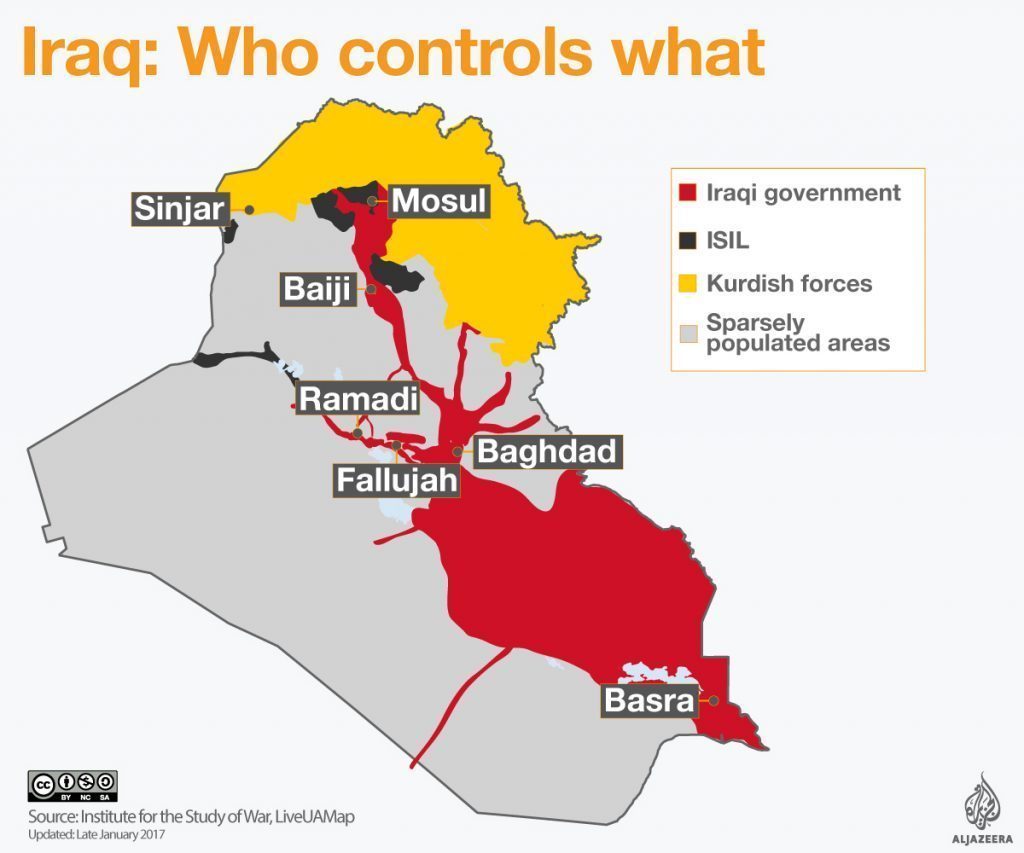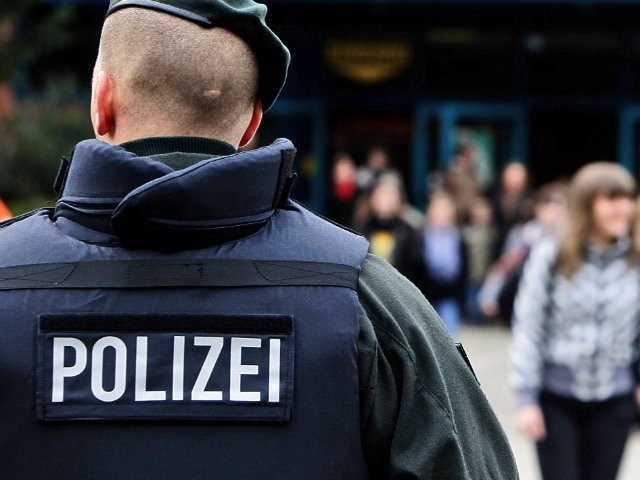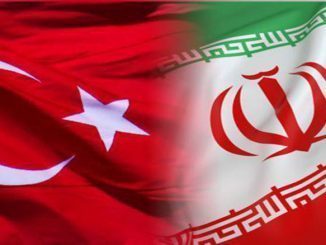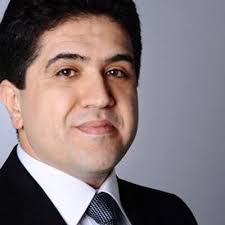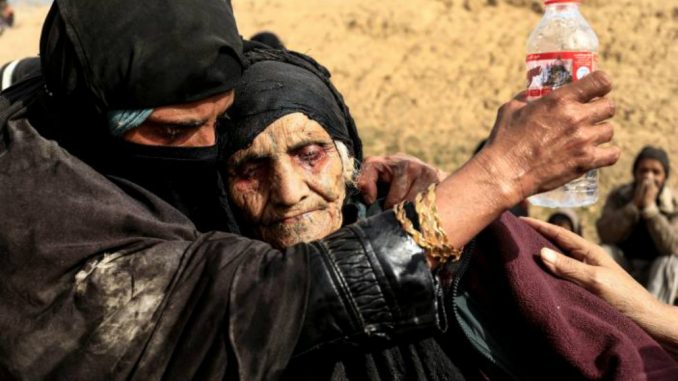
The rapidly increasing flow of people, who are pouring out of western Mosul and fleeing fierce battles between Iraqi security forces and ISIS fighters, has reached unexpected levels with 46.000 IDPs as the humanitarian situation became worse than ever.
The United States is providing air and ground support to Iraqi and Kurdish forces trying to dislodge the hardline group from Mosul, captured in 2014.
Iraqi forces captured the eastern side of Mosul in January after 100 days of fighting and launched their attack on the districts that lie west of the Tigris river on Feb. 19.
Islamic State militants who retreated across the Tigris river to western districts also regularly target civilian areas under government control in the east with mortars and grenades dropped from drones.
Several thousand militants, including many who traveled from Western countries to join up, are believed to be in Mosul among a remaining civilian population estimated at the start of the offensive at 750,000.
They are using mortars, sniper fire, booby traps and suicide car bombs to fight the offensive carried out by a 100,000-strong force made up of Iraqi armed forces, regional Kurdish peshmerga fighters and Iranian-trained Shi’ite paramilitary groups.
All roads cut
The army’s 9th Armored Division was within a kilometer of Mosul’s Syria Gate, the city’s northwestern entrance, a general from the unit told Reuters by telephone.
“We effectively control the road, it is in our sight,” he said.
Mosul residents said they had not been able to travel on the highway that starts at the Syria Gate since Tuesday. The road links Mosul to Tal Afar, another Islamic State stronghold 60 km (40 miles) to the west, and then to Syria.
The closing of the westward highway meant that Islamic State are besieged in the city center, said Lt General Abdul Wahab al-Saidi, the deputy commander of the Counter-Terrorism Service (CTS), deployed in the southwestern side.
Units from the elite U.S.-trained division battled incoming sniper and anti-tank fire as they moved eastwards, through Wadi al-Hajar district, and northward, through al-Mansour and al-Shuhada districts where gunfire and explosions could be heard.
These moves would allow the CTS to link up with Rapid Response and Federal Police units deployed by the riverside, and to link up with the 9th Armored Division coming from the west, tightening the noose around the militants.
In addition, the combined forces advanced in the western side pushing the ISIS militants into a shrinking area.
“The provincial council and the governorate building are within the firing range of the Rapid Response forces,” a media officer with the elite Interior Ministry units told Reuters, referring to within machinegun range or about 400 meters (1,300 feet).
Taking those buildings would help Iraqi forces attack the militants in the nearby old city center and would be of symbolic significance in terms of restoring state authority over the city.
U.S.-trained Counter-Terrorism Service (CTS) units battled Islamic State sniper and mortar fire as they moved eastwards through Wadi al-Hajar district to link up with Rapid Response and Federal Police deployed by the riverside, in a move that would seal off all southern access to the city.
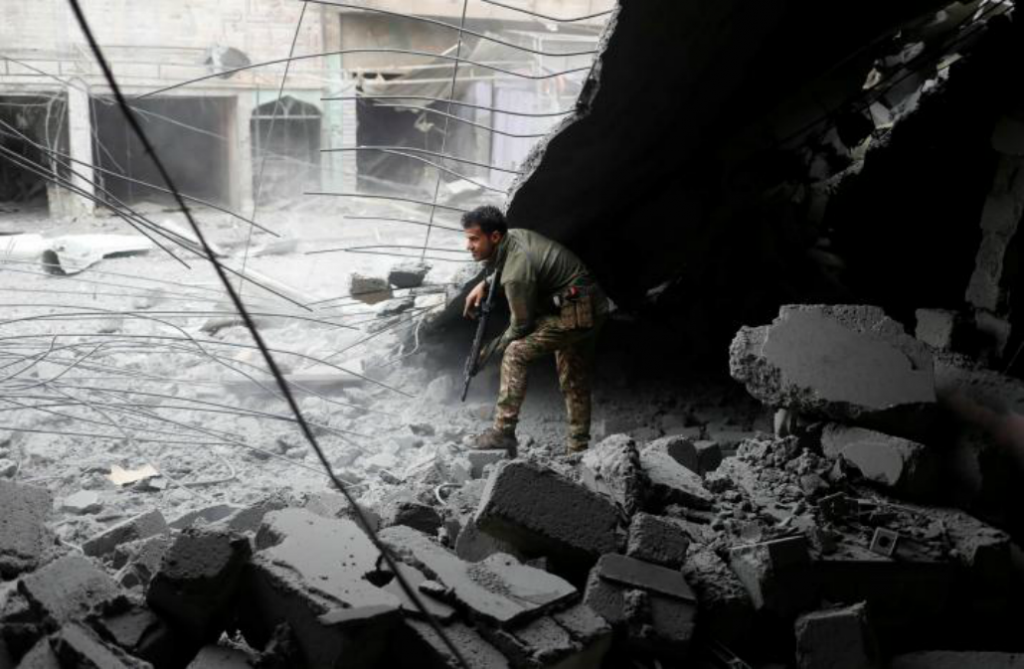
46.000 civilians displaced
More than 46.000 civilians have been forced from their homes in western Mosul in the latest phase of the battle that began on Feb. 19, while the total number displaced since the offensive for Mosul started in October exceeds 191,000, according to the United Nations.
Iraq’s interior ministry said on Friday that 14,000 people fled the northern Iraqi city on Thursday alone, the largest wave of internally displaced people (IDPs) since the battle started.
Overall, the total number displaced since the battle for Mosul started in October exceeds 176,000, according to the UN.
The announcement followed a previous statement by the United Nations warning that around 4,000 civilians were fleeing the city, ISIL’s last major urban stronghold in Iraq, each day.
IDPs in a refugee camp in Khazer, east of Mosul, cited the “intensity of coalition air strikes” as one of the main reasons for leaving their homes.
“People in the camp who just arrived explained how terrifying the situation was on those front lines,” a journalist said.
“It’s a desperate situation for these people; they are being moved across the country to different areas to be housed.
“Aid agencies are warning that they expect the numbers to rise, particularly because west Mosul is densely populated and the fighting has not even reached those areas.”
No secure humanitarian corridors
Even when they are fleeing, death keeps hunting the Iraqi civilians as there are no safe humanitarian corridors out of the city and ISIS militants were shooting any one who tries to leave.
“There is no secure humanitarian corridor to get out of the neighborhoods that have been cleared, but even then there is still crossfire,” she said.
“They [civilians] are having to make their way over barren land … just southwest of Mosul. We have seen people walking across land; people in wheelchairs, women with children exhausted and terrified, also leaving relatives behind because they are not sure if the route is secure.”
Some of the displaced were moving from areas already under Iraqi military control, afraid of the ongoing fighting and eager to move to safety.
Others escaped across the frontline, waiting until they saw Iraqi forces in the distance and running towards them with white flags.
Along the way, they faced horrifying scenes.
“There were bodies in the street as we walked, children, pieces of bodies,” Safana, 23, told the AFP news agency, as she waited in a food distribution queue in the Hamam al-Alil camp.
One man was carrying a woman who had lost consciousness after her son was wounded by shrapnel as they fled the Tal al-Rumman district.
Another man, Abu Ali, arriving from Tal al-Rumman with his four young children, said Islamic State militants had killed their mother three months ago after she went out with her face uncovered. He said he had found her body in the mortuary, adding: “I would drink their blood.”
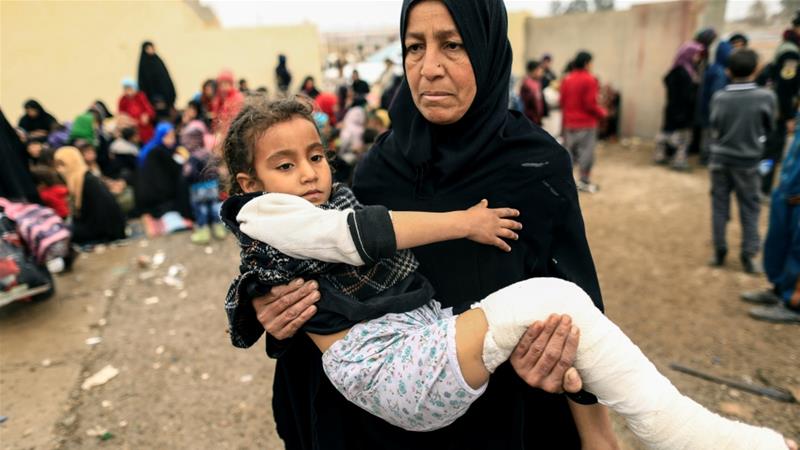
No food left in Mosul
Many fleeing residents complained of hunger. One boy, Ali, held his baby sister as they queued for food handouts. He said they tried to flee on Wednesday but gave up when they came under Islamic State gunfire. On Thursday they managed to get out.
A man said he spent 11 days hiding in his house with no food, no water and no idea of what was happening outside.
“The archangel of death would have come for us if we stayed any longer,” he said.
Caroline Gluck, of the UN refugee agency, told Al Jazeera that people who were unable to flee from the ISIL-controlled areas were living in appalling conditions amid increasing food shortages.
“Families told us that they are running out of food,” she said from Iraq’s capital, Baghdad.
“Many are only eating bread and water or tomatoes or water, one meal a day. Not only have food prices skyrocketed, but now there is virtually no food available for sale even if you have money.
“Electricity is barely functioning and water is running out.”

